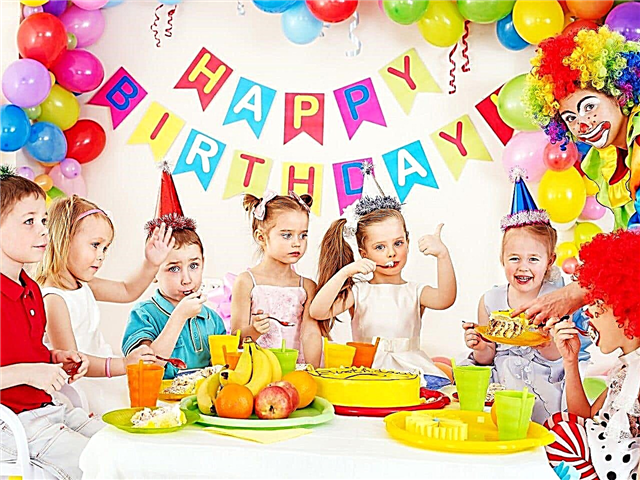
For the successful development of writing and reading, the child must have a fairly developed attention. At an early age, it is scattered, but gradually becomes fixed, as a result of which one thing can captivate the baby for a long time. It is especially important to be attentive and collected in the lessons when explaining new information to be learned. If a 10-year-old child has difficulty concentrating, special exercises and tasks will help him.
Form of conducting classes
To form the attention of the student, a variety of exercises and games are used, during which they look for mistakes, correspondences and changes. The main task of such classes is to influence the main characteristics of attention: volume, switchability, stability, concentration.
With properly organized education, parents and teachers can develop an important quality of any successful person in their children: attentiveness.

You can also work with your child aiming, setting aside a certain time for training several times a week and in between times. To improve attention in daily life, discuss with your child what you see or read, trying to notice as many details as possible. For example, returning home from the cinema, you can recall the best moments of the film or describe the appearance of the characters.
Do not neglect such a wonderful way to develop attention and thinking, like board games. Backgammon, chess, checkers, loto or uno can be played with the whole family.
Find a game that your child will like, and you will grab his attention for a long time, and also teach how to think logically, plan your moves and predict the actions of your opponent.
Simple tasks
To develop attention and memory in children 10 years old, you can use the following games and tasks:
- describe from the character's memory a fairy tale or story just read;
- to learn songs without reading their text, but by ear;
- look for differences in 2 similar pictures;
- put several objects in a bag, and then guess by touch what exactly came to hand;
- restore the correct order of objects or pictures after mixing them;
- circle certain numbers or letters;
- paint certain shapes;
- look for specified objects in the picture;
- guess the correct words if syllables are mixed up in a given word;
- read words in reverse;
- repeat movements for an adult;
- list items in the room whose name begins with a given letter;
- solve crosswords.
These are not all of the options for activities that contribute to the development of mindfulness, improving memory and other mental processes. If you turn on your imagination, you can come up with dozens of exciting games, during which the child will actively assimilate, remember and reproduce information.
All of them will help at school - they will teach you to focus on the necessary material, cope with the assigned tasks and work productively in the classroom.

Effective exercise
Wanting to increase the attention of a student, they often turn to to Schulte tables. They are plates with numbers that are specially scattered. The child's task is to find all the numbers in order, switching attention as quickly as possible.
The number of cells in Schulte tables varies from 9 (in such tables there are only 3 columns of 3 cells, and they are intended for younger students who have just begun to study numbers) to 256 (such tables are 16X16 in size, they are the most complex). The most common are plates with 25 cells (5X5), respectively, they contain numbers from 1 to 25.
In addition to the standard ones, there are also letter tables... Studying with them, the child must look for letters, remembering the alphabet. In addition, there is a color option called Gorbov-Schulte tables... Unlike standard ones, they have numbers printed on red and black backgrounds. The second option is that the background is white, but the numbers themselves are red or black.
Classes with any kind of Schulte tables develop attention, peripheral vision, memory and oral count. Workout on letter signs helps to master speed reading.
There are some other interesting concentration exercises.
- "The words". A certain topic is chosen, then the adult names one word, the child repeats it and calls another word, the adult repeats 2 words and adds a third, and so on. For example, if the topic is "Fruit", one participant says "orange", the other says "orange-kiwi". The next one is "orange-kiwi-banana", the next is "orange-kiwi-banana-apple", and so on. The task is to memorize the sequence of words. The game will become even more interesting if there are several participants.
- "Letters"... The child is given a sheet of text and an assignment: to read everything carefully, crossing out a certain letter, say, "and". Letters can also be underlined or simply counted. To complicate the task, you can guess several letters at once, for example, "a" must be crossed out, and "e" - underlined.
- "Search for the hidden"... The first variant of such an exercise is to search for words inscribed in continuous rows of letters. The second option is to look for a specific combination of numbers in rows of numerous numbers.


Expert advice
To teach your child to be more attentive and develop the skill of concentration, you should:
- do it regularly, without long pauses;
- offer a variety of tasks, taking into account the interests of the child;
- exclude the influence of external stimuli to which the child will be distracted;
- clearly and concisely explain the task, making sure that the child understands everything;
- not make comments or leave comments when the child is focused on the exercise;
- do not scold for failures and mistakes.
Besides, psychologists and teachers note that decreased attention and memory impairment can be symptoms of overwork. If a child has a poorly organized daily routine, he sleeps less than the norm for age (9–10 years old it is 9–11 hours), is overloaded with additional activities, walks little or does not eat well, this will certainly affect the state of his nervous system.
Due to chronic lack of sleep and lack of nutrients, the child will be less able to assimilate information, be constantly distracted, have difficulties with homework, so first of all, you need to evaluate and correct the regimen, and then start mindfulness training sessions.


For information on how to increase the attention of a student, see the next video.



